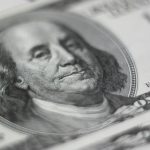A “famous” trademark is one that has reached such a level of public awareness that it enjoys certain advantages in litigation.
The word “famous,” however, is not necessarily the dictionary definition. It is a legal concept defined for purposes of trademark litigation both by statute and through Federal case-law.
This article will discuss what a famous trademark is—and what it isn’t. It will also discuss the extent to which the definition of a famous trademark varies slightly depending on the sort of trademark litigation surrounding a claim to trademark fame.
Famous Trademarks: The Statutory Definition
The statutory definition of a famous trademark arises from the Lanham Act, or US Trademark Act.
The Lanham Act defines a famous trademark as one which is “… widely recognized by the general consuming public of the United States as a designation of source of the goods or services of the mark’s owner.”
This provision goes on to state that, in determining whether or not a trademark is famous, courts may consider “all relevant factors,” including:
- The “… duration, extent, and geographic reach of advertising and publicity of the mark,” regardless of who is doing the advertising, the owner or a third party;
- The “… amount, volume, and geographic extent of sales of goods or services offered under the mark …”;
- The “… extent of actual recognition of the mark”; and
- Whether the mark was registered under the prior Trademark Act of 1881, the Lanham Act, or on the Principal (rather than Supplemental) Register.
Courts may consider additional factors.
However, the main thrust of the statutory definition of a famous trademark is that the mark must approach something akin to household name status to be recognized as such by a court. This required level of fame has been emphasized repeatedly by courts.
The Famous Trademark in Action
The question of whether a trademark is famous or not is fact-specific.
That is, courts, when presented with an alleged famous trademark, will examine the real-world specifics of the trademark or service mark’s recognition by the public, advertising reach, and other factors to determine whether or not the Lanham Act criteria above are met.
Famous trademarks are defined as such by courts, however, from within the context of specific disputes and not as free-standing, free-flowing thoughts.
Courts issue decisions when faced with two (or more) adversaries bringing legal disputes before them, in other words. Courts in the US do not have the authority to simply opine and create new law outside of the context of specific cases.
With regard to trademark registration matters, there are generally 2 forms of litigation in which the question of allegedly famous trademarks will arise:
- Likelihood of Confusion Disputes
- Dilution-by-Blurring Disputes
The standards for the recognition of a famous trademark by a presiding court differ from one of these litigations contexts to the other.
Famous Trademarks in Likelihood of Confusion Disputes
A Likelihood of Confusion dispute arises in the process of a trademark registration application “Office Action” refusal or in the process of a private “cancellation” proceeding.
An Office Action is a refusal issued by the US Patent and Trademark Office (USPTO) Examiner assigned to review a given trademark registration application.
One of the key underlying principal regarding a trademark’s eligibility for registration is that it must be unique enough to specifically identify to consumers that its owner is the source of the goods and/or services with which it is associated.
It cannot be “merely descriptive” of those services or goods—and it cannot be so similar to a prior registered trademark that consumers will be likely confused as to what they are buying and from whom.
When this latter situation appears possible to a USPTO Examiner, a “Likelihood of Confusion” (or “2(d)”) Office Action refusal will be issued.
When any Office Action is issued, the applicant has the opportunity to respond and to present legal argument, evidence, and facts in defense of the application.
Among the various factors used by courts to determine whether or not a proposed trademark is likely to confuse is the fame of the prior registered mark.
Likewise, when a third-party trademark registration owner or other party of interest files a so-called “cancellation” proceeding in an effort to have a registered trademark removed from the USPTO register on the basis that it is likely to confuse, the question of a trademark’s fame can also arise.
In fact, the question of fame is more likely to arise in cancellation proceedings as the USPTO Examiners generally lack the evidence to argue the subject one way or another.
In Likelihood of Confusion disputes, a famous trademark is given more leeway to prevent the registration of a proposed trademark or to cancel the registration of a registered trademark because the public is more likely to remember and associate that mark with those goods or services.
When a court agrees that a trademark is famous, that fame will dominate the court’s analysis of whether there is or is not a Likelihood of Confusion between the marks at issue. Other factors, such as the appearance or sound of the respective marks, will provide support to the argument but without the same weight.
As with all assertions in litigation, the burden will be on the party alleging that a trademark is famous to prove that it is so.
In one cancellation proceeding, the court examined the alleged fame of a plaintiff’s trademark in terms of “indirect measurements,” including the volume of sales and advertising of goods accompanied by the mark and the length of time of the public’s commercial awareness of the mark in relation to those goods.
The court in that case also examined the plaintiff’s market share, brand awareness, licensing activities, and the variety of goods bearing the allegedly famous trademark.
The court found that the mark was famous for one sort of product—but not the one at issue in the Likelihood of Confusion dispute.
In other cases, courts have review the level of commercial awareness and other factors within the specific state in which the dispute occurred and the industries in which the fame was alleged to persist—or not.
For example, in the 2020 case of Cornette v Graver, the Western District of Pennsylvania District Court held that a celebrity wrestler did not have a famous trademark as he produced no evidence that he was nationally famous, despite having a large number of Twitter and YouTube followers.
The standard for a famous trademark in such disputes is high.
Famous Trademarks in Dilution-by-Blurring Disputes
In “Dilution-by-Blurring” disputes, the standard for famous trademarks is even higher.
These disputes also occur within the context of trademark cancellation proceedings. In addition to Likelihood of Confusion arguments, another basis for petition a court for a registered trademark’s cancellation is that it may “dilute” the value of the plaintiff’s mark.
A plaintiff’s trademark must be famous to succeed in this claim.
For a trademark to be famous enough to warrant protection against dilution, a plaintiff must show that its trademark is “widely recognized by the general consuming public of the United States as a designation of source of the goods or services of the mark’s owner.” (NY Yankees P’ship v IET Prods. & Servs., Inc.)
The requirement that the fame must be acknowledged by the general public is a heavy burden for a plaintiff.
It precludes any claim of a so-called “niche” famous trademark, or a trademark that is famous within a certain geographic locality or with a certain product or service fanbase.
A plaintiff must demonstrate that, whenever any member of the public encounters the trademark, it is immediately recognized and associated with those goods or services provided by the mark’s owner.
Famous Trademarks: The Bottom Line
The bottom line is that a famous trademark is a difficult argument to make. Even well-known brands have failed to prove fame when the facts aren’t fully proffered to the court—or don’t exist in the first place.
A trademark may be famous for one type of thing or in one specific place—but that isn’t going to be sufficient to have another registered trademark cancelled unless more is shown to the court.
Noble Path Trademark Law is a boutique US law practice located in Metro Detroit and assisting individuals, entrepreneurs, artists, musicians, start-ups, and enterprises of scale in all industries with trademark registration, trademark renewal, trademark monitoring, and Office Action refusal response matters.
We offer virtual consultations, premium customer service, and the expertise you need to maximize your odds of trademark registration success.
Click the “Register Your Trademark” button below to schedule your initial consultation and to begin your brand protection journey.





